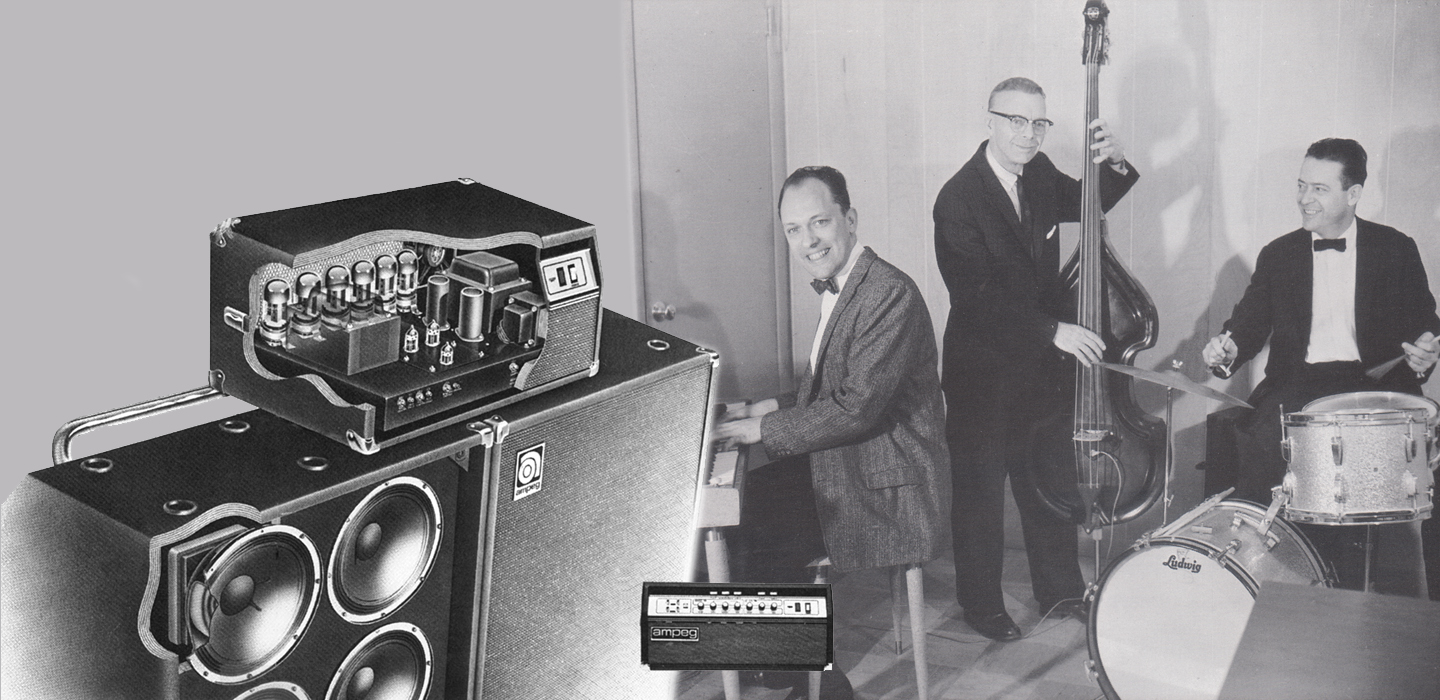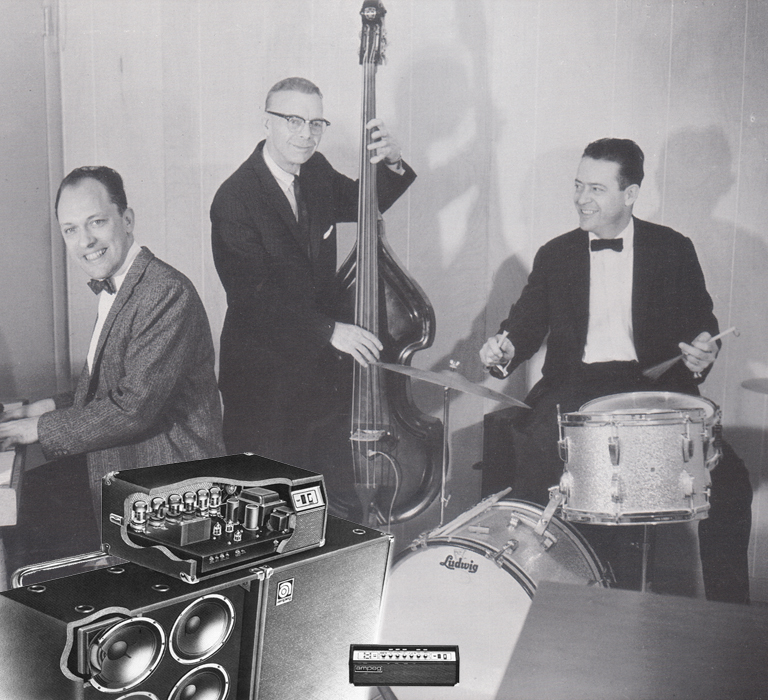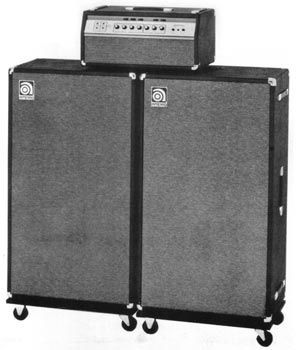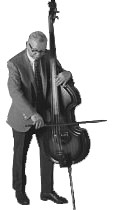

AMPEG HISTORY
300 Watts of Bass Amp Glory:The SVT Story
1969 was a year giants rocked the earth—and they wanted big amps. Stadiums and outdoor festivals were where the action was, and 50 watts just wasn't enough to move that girl sitting in the 61st row wearing her hand-embroidered bellbottoms. It wasn't as if no one had responded to the need, however, as demonstrated by the walls of Marshalls, Hiwatts, Dual Showmans and other loud amplifiers.
Ampeg needed to compete, so amp designers Bill Hughes and Roger Cox—with input from Bob Rufkahr and Dan Armstrong—set about creating what Cox referred to as "the biggest and nastiest bass amplifier the world had ever seen." The team came up with an all-tube monster they called the Super Vacuum Tube—or SVT—the 300-watt output of which outgunned the deafening 200-watt Marshall Major by a full 100-watts!
Unveiled at the 1969 NAMM show in Chicago, the SVT head alone weighed 95 pounds and contained 14 tubes, six of which were huge 6146 power tubes. To heat all those tubes, massive transformers with magnetic fields powerful enough to cause genetic mutations were necessary. And what kind of speakers were able to handle all that power? Nothing less than two cabinets sporting eight ten-inch speakers and weighing 105 pounds each.
 After surveying his creation, Cox was actually concerned about potential liability—when your engineers warn of the possible harm their designs could cause, you'd better listen. Ampeg management did and devised a warning label which read:
After surveying his creation, Cox was actually concerned about potential liability—when your engineers warn of the possible harm their designs could cause, you'd better listen. Ampeg management did and devised a warning label which read:
"THIS AMP IS CAPABLE OF DELIVERING SOUND PRESSURE LEVELS THAT MAY CAUSE PERMANENT HEARING DAMAGE."
Some say we make our own luck, but they're usually the people with all the luck. Luck came to Ampeg, not from their own doing, but by the lack of knowledge concerning international voltages on the part of the Rolling Stones. It seems the Stones shipped their Fender amps over to the States to rehearse for their soon-to-be-legendary 1969 world tour, plugged them in, switched them on, and the resulting smoke and flames caused the roadies to remember that the amps were set up for U.K. voltage.
The Stones may have been "The Greatest Rock ‘N' Roll Band in the World," but like all bands, they liked to get free gear. In a panic, now deceased Stones keyboard player and road manager Ian Stewart contacted Rich Mandella, Ampeg's Hollywood liaison, desperately begging for amps for the tour that was at that point only weeks away.
 Mandella, knowing a good thing when he saw it, loaded up all the SVT prototypes and some old 4x12 cabs into his pickup and headed down to the Warner Brothers lot where the Stones were rehearsing. Keith, Mick Taylor, and Bill Wyman plugged in to the SVT prototypes and proceeded to turn them up to a level that reduced the un-hip to flaming piles of goo. The Stones may have had sympathy for the devil, but they gave no such kindness to the SVT prototypes, and Mandella noticed that the prototypes were getting close to meltdown under Keith's relentless bashing. According to Mandella, "Everything he was doing in rehearsal just kept getting louder and bigger and crazier, with two or three heads per person. I'd watch the amps, and when I could see one was about to explode, I'd just switch heads."
Mandella, knowing a good thing when he saw it, loaded up all the SVT prototypes and some old 4x12 cabs into his pickup and headed down to the Warner Brothers lot where the Stones were rehearsing. Keith, Mick Taylor, and Bill Wyman plugged in to the SVT prototypes and proceeded to turn them up to a level that reduced the un-hip to flaming piles of goo. The Stones may have had sympathy for the devil, but they gave no such kindness to the SVT prototypes, and Mandella noticed that the prototypes were getting close to meltdown under Keith's relentless bashing. According to Mandella, "Everything he was doing in rehearsal just kept getting louder and bigger and crazier, with two or three heads per person. I'd watch the amps, and when I could see one was about to explode, I'd just switch heads."
Since those prototype SVT heads were the only ones in existence—production was still aways away—it was decided in a very smokey room that Mandella would accompany the Stones on the tour as their personal Ampeg technician. While the Stones rocked, and the audience grooved, Rich Mandella was behind the backline making sure everything was sorted. If you want a sample of the mayhem, check out Gimme Shelter, the Stones' own documentary of the 1969 world tour. But if you want to hear those early SVTs blasting for all they're worth, rush right down and pick up Get Yer Ya-Ya's Out.
Since then, the SVT has become the bass amp that rock bassists dream of, whether they're famous or completely unknown. Ampeg has modified the SVT concept for a wider variety of sounds, but fortunately, they still make the SVT-VR, which is virtually identical to the ones the Stones used to put their Jack Daniels bottles on top of. (The SVT-Classic is also available, and is very similar to the original.)
Former Bass Player editor Scott Malandrone put the SVT in perspective this way: "The SVT has done for the sound of electric bass what the Marshall Super Lead had done for the electric guitar—it would give the instrument an identity."

The Story Behind the Sound
In 1946, Everette Hull, an accomplished pianist and bass player, organized a partnership with Stanley Michaels under the name Michaels-Hull Electronic Labs. Their mission was to produce a new microphone pickup that Hull had designed. The pickup was fitted on the end of an upright bass and was dubbed the Amplified Peg or "Ampeg" for short.
In 1949, Hull became the sole proprietor and changed the name of the company to the Ampeg Bassamp Company. Since that time, Ampeg has produced some of the music industry's most innovative and memorable products, satisfying the needs of musicians all over the world. Many of these products offer unique features and performance capabilities, resulting in six U.S. patents under the Ampeg brand name.
In 1960, a design engineer by the name of Jess Oliver created a combo amplifier with a chassis that could be inverted and tucked inside the speaker enclosure, protecting the inner workings and increasing portability. Nicknamed the "Portaflex," this amplifier became the standard in bass combos throughout the '60s and '70s. Also in the early 1960s, Ampeg was the first company to incorporate reverb in an amplifier. The Reverbrocket preceded Fender's Vibroverb (often thought of as the first) by nearly two years.
In 1969, Ampeg designed the most powerful instrument amplifier ever made. The SVT bass amplifier not only harnessed 300 watts of pure tube power, it also introduced a new tube (valve) technology dubbed Super Valve Technology, or SVT for short. Since that time, the SVT has proven its roadworthiness and it remains the most widely used bass amplifier on stages throughout in the world.
In 1986, St. Louis Music Inc. purchased Ampeg and continued the tradition of making high-quality, musician-satisfying products. The current Ampeg Classic Series and PRO Series models are among the latest in the evolution of professional, innovative, and feature-rich amplifiers.
In 2005, Ampeg was purchased by LOUD Technologies, who continued to build upon the success of the Classic Series and PRO Series amps. LOUD also developed and revived a number of other series along the way, some of which are still current, including the Heritage Series, PRO Neo Series, Portaflex Series, and Micro VR stack.
Ampeg Today
Yamaha Guitar Group, Inc. (YGG) acquired the Ampeg brand in 2018—bringing it under the same roof as Yamaha basses/guitars/amplifiers and digital innovators Line 6. Honoring 70+ years of celebrated Ampeg history and the 50th anniversary of the amplifier that put Ampeg on the rock 'n' roll map, the first thing developed by YGG was the Heritage 50th Anniversary SVT, a product that quickly became one of the most requested amplifiers amongst touring artists and backline companies.
Moving forward while at the same time embracing its legacy, Ampeg introduced a completely redesigned series of Rocket Bass combo amplifiers in 2021. Besides sporting the company’s new Super Grit Technology circuit (dubbed SGT), these combos are considerably lighter than previous Rocket Bass amps.
Gazing into the future of bass amplification and anticipating the needs of bassists of all levels and styles, YGG and Ampeg continue to push analog and digital technologies to their limits—an effort that has already resulted in the SVT Suite bass amp and effects plugin.
